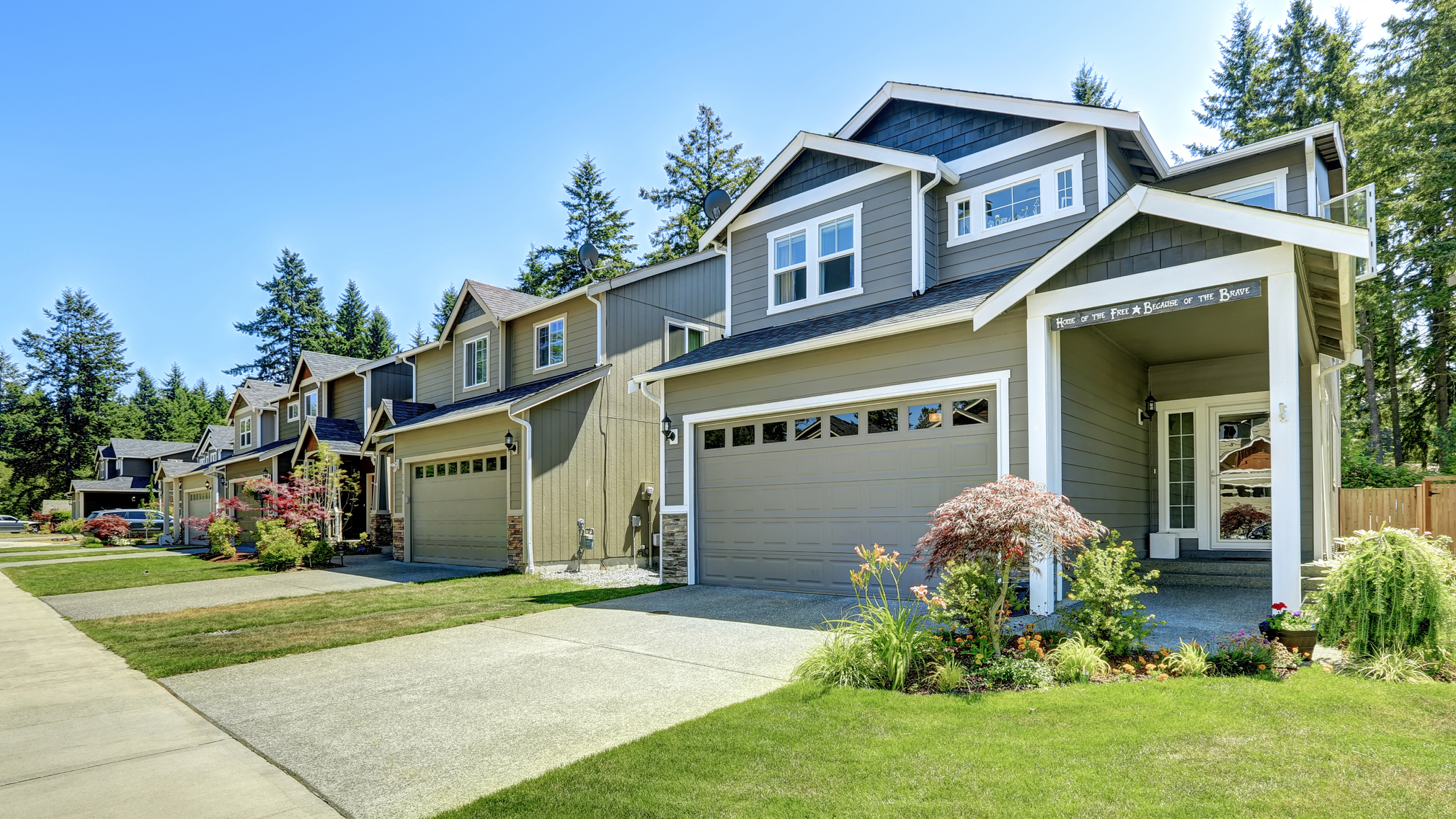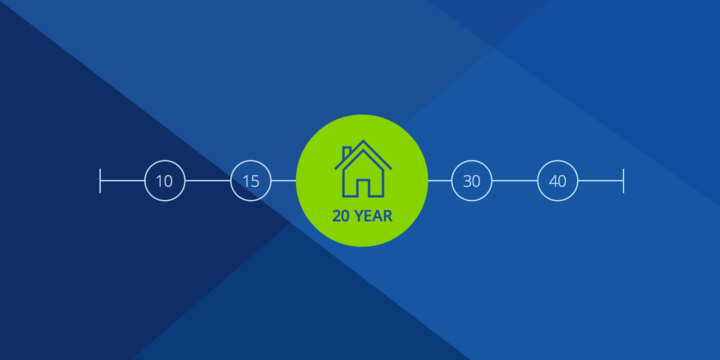What Is an Assumable Mortgage?


Written by Alycia Lucio on October 25, 2024
Key takeaways
- Lets a buyer take over the seller’s existing mortgage, often at a lower interest rate than current market rates.
- Common with FHA, VA, and USDA loans, but lender approval is required.
- Buyers must still qualify for the loan, and terms like remaining balance and payoff period transfer as-is.
An assumable mortgage is one that a buyer of a home can take over from the seller – often with lender approval – usually with little to no change in terms, like monthly payment and interest rate. The only caveat is that by assuming a mortgage, you agree to make all future payments on the remaining loan balance, as if you took out the original loan yourself. Assuming a mortgage is not common practice across most states. Be sure to check with the mortgage lender first.
We’ll guide you through which mortgages are assumable, how they work, and how to find an assumable mortgage.
Are all mortgages assumable?
Almost all FHA, VA, and USDA mortgages are assumable. Most conventional mortgage loans are not. This is because conventional loans are backed by Fannie Mae and Freddie Mac, who set different lending requirements than the federal government, who insures FHA, VA, and USDA loans.
Why can’t you assume a conventional loan?
Conventional loans are typically not assumable because they come with a due-on-sale clause. This is a clause that specifies that the existing loan must be paid in full by the seller or buyer, whether the home is sold or the deed is transferred. The due-on-sale clause associated with conventional mortgages mitigates a lender’s risk by preventing the loan from being assumed by another borrower who may default on their payments.
The only exceptions to the due-on-sale clause for assuming a conventional loan are:
- A jointly owned home becomes owned by a single spouse because of a divorce
- A homeowner transfers the home to their children
- The owner passes away, and a family member inherits the house
Is my mortgage assumable?
If you have an FHA, USDA, or VA mortgage loan, it’s likely assumable. To be sure, you’ll have to review your mortgage contract for an assumable clause, which is the provision that allows you to transfer your mortgage to an eligible buyer. You must also verify the provision with your lender, as your lender has the final say regarding whether a buyer can assume your mortgage and purchase your home.
In addition to verifying that your mortgage is assumable, your lender will also want to assess the buyer looking to assume your mortgage to ensure they meet their qualification requirements. They’ll evaluate the buyer’s income, creditworthiness, and debt history the same way they evaluated yours to determine whether they can fulfill the financial obligations of the loan.
What is an unauthorized assumable mortgage?
An unauthorized assumable mortgage, also known as a simple assumption, occurs when the seller allows the buyer to move into the home and take over the mortgage payments without involving the lender. Unauthorized assumable mortgages can be problematic, as it’s basically renting out your home without taking the proper steps to protect yourself if the buyer stops making payments. If your lender finds you violated your mortgage agreement through an unauthorized assumption, they may require an immediate payoff of the loan, take legal action, foreclose on your home, or increase your mortgage rate.
If your mortgage isn’t assumable, you can still obtain permission from your lender to rent out your property. This option can provide you with someone to take over the existing mortgage payments and present a rent-to-own opportunity for the interested buyer. Most government-backed loans only require you to live within the home for one year before renting it out. Depending on where you live, you may also need a license or permit to take on a tenant.
How do assumable loans work?
Assumable loans work similarly to traditional home loans. The only difference is that the buyer must be approved by the seller’s existing lender to assume the loan. By assuming the seller’s mortgage, the buyer agrees to take over the existing terms, principal balance, interest rate, and monthly payments. The buyer also has to pay the lender an assumption fee, usually between 0.05% and 1% of the original loan amount. Loan assumptions usually take between 45 and 90 days (but can take longer) to process.
You may also have to make a down payment in the form of compensation equity. Compensation equity refers to the difference between the home’s current market value and the remaining balance on the mortgage. If the price of the home exceeds the remaining loan amount, you’ll have to pay the difference upfront, which may be greater than the down payment you would make on a traditional home loan.
Can I assume a mortgage?
As long as the lender approves the assumption and you can afford the upfront costs, you can assume a mortgage. To be able to assume a mortgage, you must meet the specific lender’s borrowing criteria and receive the lender’s approval for the assumption in writing. The seller also must not be delinquent on any mortgage payments for the lender to approve the assumption.
FHA loans
You can assume any FHA loan that originated before December 1, 1989, without restrictions. FHA loans originated on or after December 15, 1989, you’ll need to meet the lender’s qualification criteria for FHA loans. Typically, this includes having a credit score of at least 580 and a debt-to-income ratio (DTI) of 43% or less.
VA loans
While VA loans are designed for military service members, veterans, and surviving spouses, anyone can assume a VA loan if it originated on or after March 1, 1988. The VA lender will have to approve your creditworthiness, which means typically having a credit score of at least 610 and a DTI of 41% or less.
USDA loans
Unlike other government-backed loans, USDA loans are typically assumable with new mortgage rates and terms. The only exception to this is if the USDA loan is being assumed by a family member or spouse. In this case, a loan transfer with the same rates and terms is permitted, and the person assuming the loan is not required to meet the eligibility requirements.
Non-family members or spouses interested in assuming a USDA loan must typically meet the loan requirements, including a minimum credit score of 620, a DTI of 41% or less, and an income that does not exceed 115% of the median household income for that area.
How to assume a mortgage
Assuming a mortgage involves finding the right mortgage and taking the steps to prepare for the transfer.
Confirm the mortgage is assumable
Once you find a home, your first step is ensuring the loan is assumable. Speak with the seller’s lender to confirm three things:
- That the loan is assumable
- That the loan is in good standing, meaning that the seller is current on all mortgage payments
- That the lender will allow the assumption to take place if you meet their lending criteria
Understand the costs
Assuming a mortgage involves closing costs ranging from 2% to 5% of the home’s purchase price. VA loan closing costs may be as low as 1% with a VA funding fee, which is usually 0.5% of the principal loan balance. Closing cost fees are paid upfront in addition to the assumption fee and compensation equity.
While the closing costs for mortgage assumption are often lower than the closing costs for an entirely new loan, the compensation equity you owe will depend on how much equity the seller has built up in the home. High compensation equity sometimes requires the buyer to apply for a second loan to assume the mortgage.
Prepare your documentation
The lender will need to verify your creditworthiness to approve the mortgage assumption. In addition to accessing your credit report, they’ll likely ask for the following documentation to complete the underwriting process:
- A copy of your driver’s license
- A copy of your social security card or Tax Identification Number (TIN)
- Recent pay stubs and banking statements
- Your W2 tax returns from the past two years
- Proof of assets and cash reserves, including savings accounts and investment accounts
- Employment verification, such as a letter from your employer
Close and sign the release of liability
If the mortgage assumption is approved, you’ll have to sign the closing paperwork. This typically includes the mortgage note and closing disclosure. You will also need to ensure that the seller is cleared of any responsibility to the mortgage by signing a release from liability form. If the seller isn’t cleared of liability, they can still be held responsible for the assumed mortgage if you default on your payments.
Pros and cons of assuming a mortgage
The pros of assuming a mortgage
- You can obtain lower mortgage rates than what’s available in the current market
- It simplifies the home-buying process as lenders don’t typically require a home appraisal
- Closing costs are generally lower, which can save you money upfront
- It can make the home easier to sell as many homebuyers in today’s market are looking for ways to make home-buying more affordable
The cons of assuming a mortgage
- If the seller has built a significant amount of home equity, a high down payment may be required
- You’re limited to working with the seller’s mortgage lender and adhering to their mortgage terms and conditions
- You may have to pay mortgage insurance if the seller made a down payment of less than 20%
- If the release of liability isn’t signed, the seller is still financially responsible for the mortgage if the new borrower defaults
When to consider an assumable mortgage
Assumable mortgages aren’t a one-size-fits-all type of deal. If you’re interested in assuming a mortgage to become a homeowner, you’ll want to consider the following:
- How much the seller has built up in equity, as this can translate to a very large down payment due at closing
- The length of time it’ll take to process your application to assume the mortgage, as it can take up to 90 days or longer
- Whether you meet the lender’s qualification criteria to assume the seller’s existing mortgage
How to find an assumable mortgage
Finding an assumable mortgage with Zillow is easier than you may think. All you have to do is visit our list of homes for sale and do the following:
- Reset filters: Go to the top right corner of the page and click on filters. Once you open the filter section, click reset.
- Search a location: Type the name of the city, neighborhood or ZIP code where you want to find a home.
- Filter by a keyword: Go back to the filters section and scroll to the bottom to the last section labeled keywords. Type the word “ASSUM” (no E) into the keyword box. This will allow you to pick up all the assumable mortgage options in your area of interest.
- Find a home: Return to the Zillow map and zoom in on your area. You’ll find that all the listings in your area of choice will have the word “assume” in the comments, meaning the homes being sold are looking for buyers interested in assumable mortgages.
You can also team up with one of our Zillow Premier Agents with local expertise to help you find homes with assumable mortgages.
How much home can you afford?
At Zillow Home Loans, we can pre-qualify you in as little as 5 minutes, with no impact to your credit score.
Zillow Home Loans, NMLS # 10287. Equal Housing Lender
Get pre-qualifiedHow much home can you afford?
See what's in reach with low down payment options, no hidden fees and step-by-step guidance from us at
Zillow Home Loans.
Zillow Home Loans, NMLS # 10287. Equal Housing Lender
Calculate your BuyAbility℠
Related Articles
Get a mortgage with Zillow Home Loans
Go from dreaming to owning with low down payment options, competitive rates and no hidden fees. A dedicated loan officer will guide you until you have your keys in hand.

Zillow Home Loans, NMLS #10287. Equal Housing Lender.



